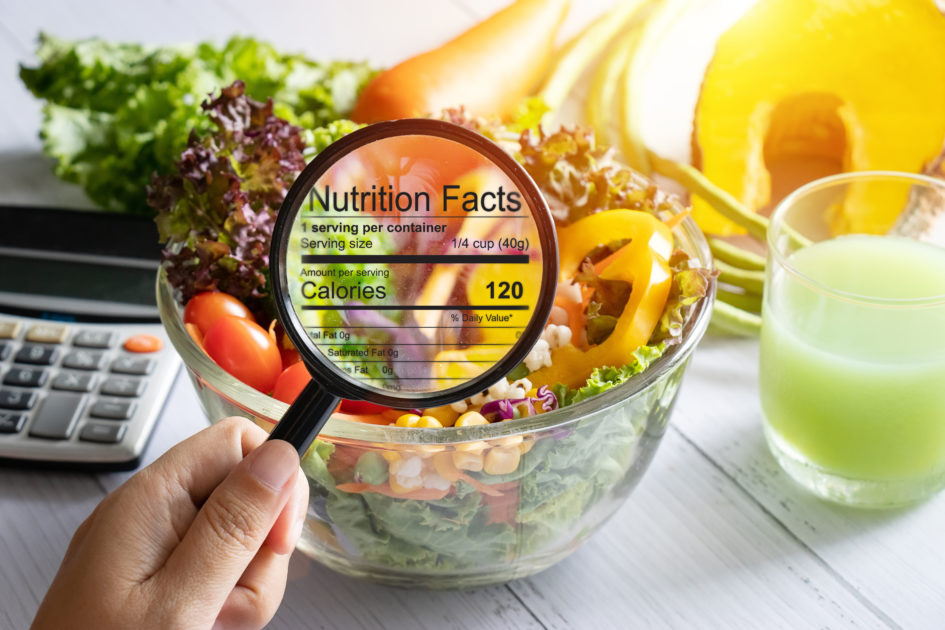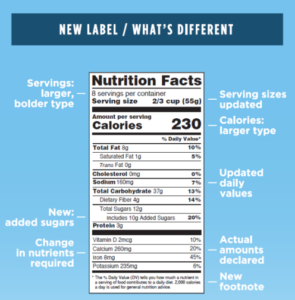The FDA (Food and Drug Administration) has issued new regulations to the Nutrition Facts labels on packaged food. This is the first major change since 1994. Read on to see how this new label can help you make more informed nutrition decisions for you and your family.
You may have already noticed the Nutrition Facts label changes on your most recent shopping trip. These updated regulations issued by the FDA (Food and Drug Administration) are based on new evidence, the current dietary recommendations and input from the public. This new mandate will require all food manufacturers in the U.S. to comply by Jan. 1, 2021.
So, What’s Changing?
Calories and Fat
The updated label will show percentages from unhealthy trans and saturated fats.
Added Sugars
Labels will now show the percentage from added sugar. Less than 10% of your daily calories should be from added sugar.
Serving Sizes
According to the Centers for Disease Control and Prevention (CDC), since the average adult tends to consume more calories now than when the label was last updated, the serving size section now reflects what someone is likely to eat or drink at one time, rather than the recommended serving size based on a 2,000-calorie-per-day diet. For example, in the past, the serving size of ice cream might have been ½ cup, but would actually have ⅔ cup (in the container). Now, both a 12-ounce and 20-ounce bottle of soda will be labeled as 1 serving since people are likely to drink either size in one sitting.
Dual-Column Labels
As a result of the updated serving-size information, new dual-column labels will now show nutrition facts for a single serving compared to the consumption of the entire package.
Updated Nutrients
According to the CDC, here are the updates to the nutrient information on the label:
- Vitamin D and potassium values will now be required on the label.
- Calcium and iron will continue to be required.
- Vitamins A and C will no longer be required but can be included on a voluntary basis.
Sodium Allowance
The daily limit for sodium is decreasing from 2,400 mg per day to 2,300 per day.
Sources:
“Changes to the Nutrition Facts Label,” U.S. Food & Drug Administration, fda.gov, accessed Jan. 29, 2020.
“Learn How the New Nutrition Label Can Help You Improve Your Health,” Centers for Disease Control and Prevention, cdc.gov, accessed Jan. 29, 2020.
https://www.cdc.gov/nutrition/strategies-guidelines/nutrition-facts-label.html
https://www.today.com/food/here-s-what-new-nutrition-facts-food-labels-look-t171083


